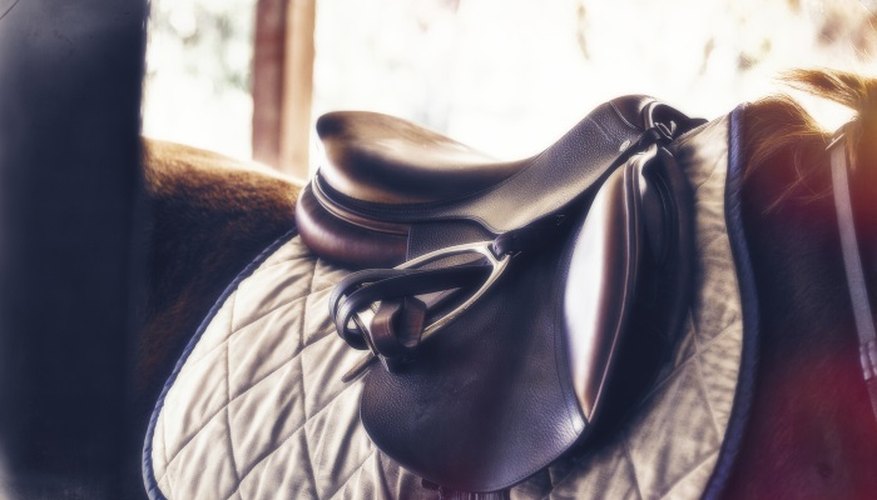You know vegetable-tanned leather. It is the natural-coloured, tan, smooth leather that you may see on luggage, saddles and horse tack. It is also the leather that crafters use in tooling, which they may then dye. Vegetable-tanned leather is tanned using tannins and other extracts of vegetable versus the oil-tanned or chromium-tanned leathers, which you might see on saddle bags and shoes. Vegetable-tanned leather appears pristine and evenly coloured when you buy it, but it becomes dappled and stained with use.
Uniformity
Vegetable-tanned leather typically has no dyes. You have likely noticed that a single raindrop stains a vegetable-tanned pair of boots or piece of luggage. As it dries, you will notice that the water leaves a stain. This is no tragedy---with time and use, the leather develops a handsome broken-in look. Still, you may wish a cleaner, uniform look. You will find it difficult to maintain that original light finish, but you can clean it to maintain a uniform finish with some readily available cleaners and conditioners.
- Vegetable-tanned leather typically has no dyes.
- Still, you may wish a cleaner, uniform look.
Cleaners
The most aggressive cleaner available is oxalic acid, also known as "leather bleach." It is very good for removing virtually any type of stain, from oils to rubber scuffs, but it also removes any surface protectants. You use it in a very diluted solution, of 30 g of crystals per 600 ml of water at most. Too much oxalic acid leaves a dull, deadened look on the leather. Another method is to use saddle soap, like glycerine-based soap, or a simple unscented glycerine soap bar from a health food store. It is not the strongest of cleaners but is gentle and imparts moisture to the leather, while leaving a protective coating. A third method is to use a mild facial bar like Dove or even baby shampoo. These soaps are better for leather than are detergents, as they include such moisturising agents as mineral oil, lanolin and glycerine, all of which are common in leather cleaning products. Finally, you may opt for a commercial leather cleaner. Opt for a high-quality cleaner, from a maker like Lexol, Leather World Technologies or Fiebing. These are the cleaners that upholsterers and leather shops use, as they are carefully formulated to both clean and penetrate the leather but contain no drying agents like acetone or alcohol. They will leave the leather moisturised.
- The most aggressive cleaner available is oxalic acid, also known as "leather bleach."
- These are the cleaners that upholsterers and leather shops use, as they are carefully formulated to both clean and penetrate the leather but contain no drying agents like acetone or alcohol.
Protectants
Once you have allowed your vegetable-tanned leather to dry, you may apply a protectant to keep it waterproof and stain resistant. The same companies that produce quality cleaners (Lexol, Leather World Technologies and Fiebing) also manufacture protectants. These protectants are formulated to seal the leather, still allowing it to breathe. This is vital, because leather that absorbs no moisture will simply dry out and become brittle. A less expensive alternative is neutral shoe polish. This usually contains lanolin (inherent in a sheep's skin and wool) and beeswax. Between the substances, your leather goods will stay well protected. However, it will likely be darker than when you bought it. Once again, it is very difficult to maintain that original pristine finish. Let your leather age handsomely and naturally.
- Once you have allowed your vegetable-tanned leather to dry, you may apply a protectant to keep it waterproof and stain resistant.
